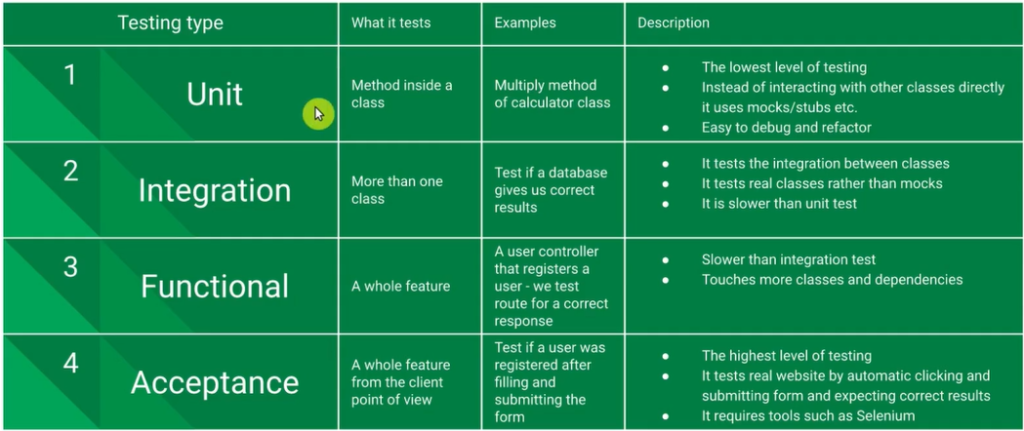
Repository with a basic example of usage of the 4 types using phpunit and webdriver: https://github.com/paulowinw/udemy_4_types_of_software_test
Test-Driven Development (TDD) is a software development practice that emphasizes writing tests before writing the actual code. This approach helps ensure code quality, maintainability, and facilitates the development process. There are four main types of tests used in TDD:
- Unit Tests: Unit tests focus on testing individual units of code, typically small, self-contained functions or methods. These tests verify that each unit behaves as expected and produces the correct output for a given input. Unit tests are fast, isolated, and provide a safety net during refactoring or code modifications. They are typically written by developers and form the foundation of TDD.
- Integration Tests: Integration tests evaluate the interaction between different units or components of a system. These tests verify that the units work correctly together and integrate seamlessly. Integration tests help identify issues that may arise due to interactions between components, such as incorrect data transfer, communication problems, or compatibility issues. They are slower and more complex than unit tests, as they involve multiple components.
- Functional Tests: Functional tests, also known as end-to-end tests, focus on testing the entire application or system from the user’s perspective. These tests simulate user interactions and validate that the system behaves as expected and meets the functional requirements. Functional tests typically cover use cases, scenarios, and user stories, and can involve multiple components, databases, external systems, and interfaces. They help ensure that the application functions correctly as a whole and provide a high-level overview of the system’s behavior.
- Acceptance Tests: Acceptance tests evaluate whether a system meets the acceptance criteria defined by the stakeholders or clients. These tests are written based on the requirements and specifications and ensure that the software meets the intended purpose. Acceptance tests often encompass a subset of functional tests but focus on higher-level business functionality. They serve as a form of documentation, demonstrating that the software meets the desired outcomes and behaves correctly according to the stakeholders’ expectations.
By incorporating these four types of tests into the TDD process, developers can gain confidence in their code’s correctness and behavior at different levels of granularity, from individual units to the entire system. This approach helps catch bugs early, encourages modular and maintainable code, and promotes a reliable and predictable development process.

